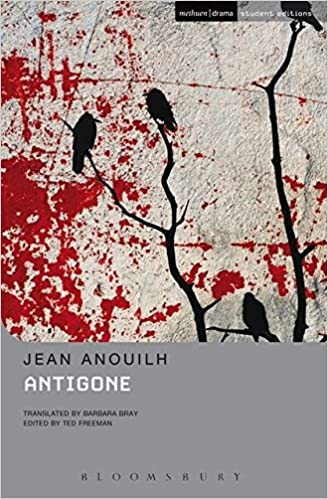

And if Antigone’s stance can be seen in the context of ‘aesthetic fascism’, there is in the play li le comfort for actual fascism as a historical political movement. An unequivocally collaborationist reading is as impossible as an unequivocally pro-Resistance one. ough Antigone comes to doubt her de- cision at the very last moment, Creon’s own last words pay tribute to her victory. ANTIGONE JEAN ANOUILH TRANSLATED BARBARA BRAY PDF Antigone by Anouilh Jean (721480) Ideal World Analyse dAntigone - Le petit lecteur Antigone by Jean Anouilh Study Guide Antigone de Jean Anouilh (par Nicolas Briançon) Jean anouilh, antigone Antigone by Jean Anouilh - ACS Athens IB Theater Arts 1 ApHL IB Jean Anouilhs. Saint-Jean (Canada), and Associate French Editor of Theatre Research in. e central confrontation in which Creon a empts to save his niece is a contest of strength in which he is the loser, an outcome which demonstrates both the limits of power and the possibility of resistance. Anouilh translated by Barbara Bray (2000). e play’s nihilism, however, encompasses not only Antigone’s apparently gratuitous and pointless death, but also the sordid cynicism of Creon’s brutal regime. e la er support an interpretation in which Creon’s necessary maintenance of order is balanced by the ‘purity’ and ‘grandeur’ of Antigone’s de ance, keywords of a movement that has been labelled ‘aesthetic fascism’. For some, Anouilh’s play presented an occasion for celebrat- ing the Resistance, but the initial production’s sole review in the under- ground press was deeply hostile, by contrast with many positive reviews in the collaborationist press. Jean Anouilh’s Antigone has divided audiences since its rst performance in 1944.


 0 kommentar(er)
0 kommentar(er)
